Scientifically known as Tillandsia, air plants have captivated the hearts of indoor garden enthusiasts with their unique beauty and low maintenance requirements. These fascinating plants, also known as epiphytes, have gained popularity due to their ability to survive without soil. Let’s explore the best air plants to own and provide detailed insights and easy solutions to care for them, ensuring you can enjoy their enchanting presence in your home.
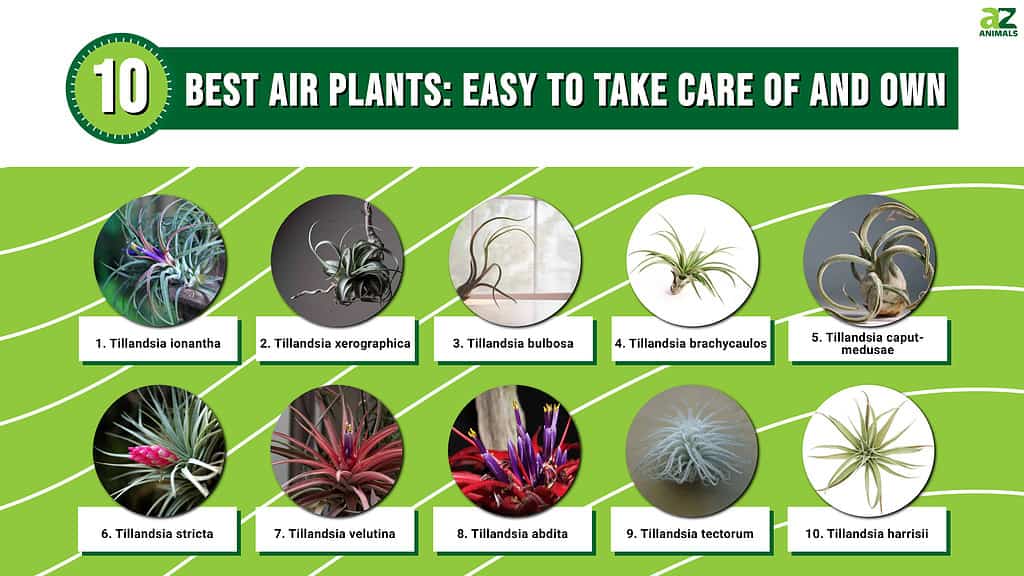
Air Plants Sustainability
One of the critical reasons why air plants are an excellent choice for indoor gardening is their sustainability. Unlike traditional potted plants that rely on soil, air plants derive nutrients from the air and rain, making them highly adaptable and resource-efficient. Choosing air plants contributes to conservation efforts by reducing potting mix and fertilizers.
Air plants play an essential role in purifying the air in your home. They absorb toxins and release fresh oxygen, promoting a healthier living environment. Furthermore, their ability to thrive without soil allows for unique and creative display options, making them versatile additions to any home decor.
List of Popular Air Plants
There are many types of air plants. Here are some of the most popular.
1. Tillandsia ionantha
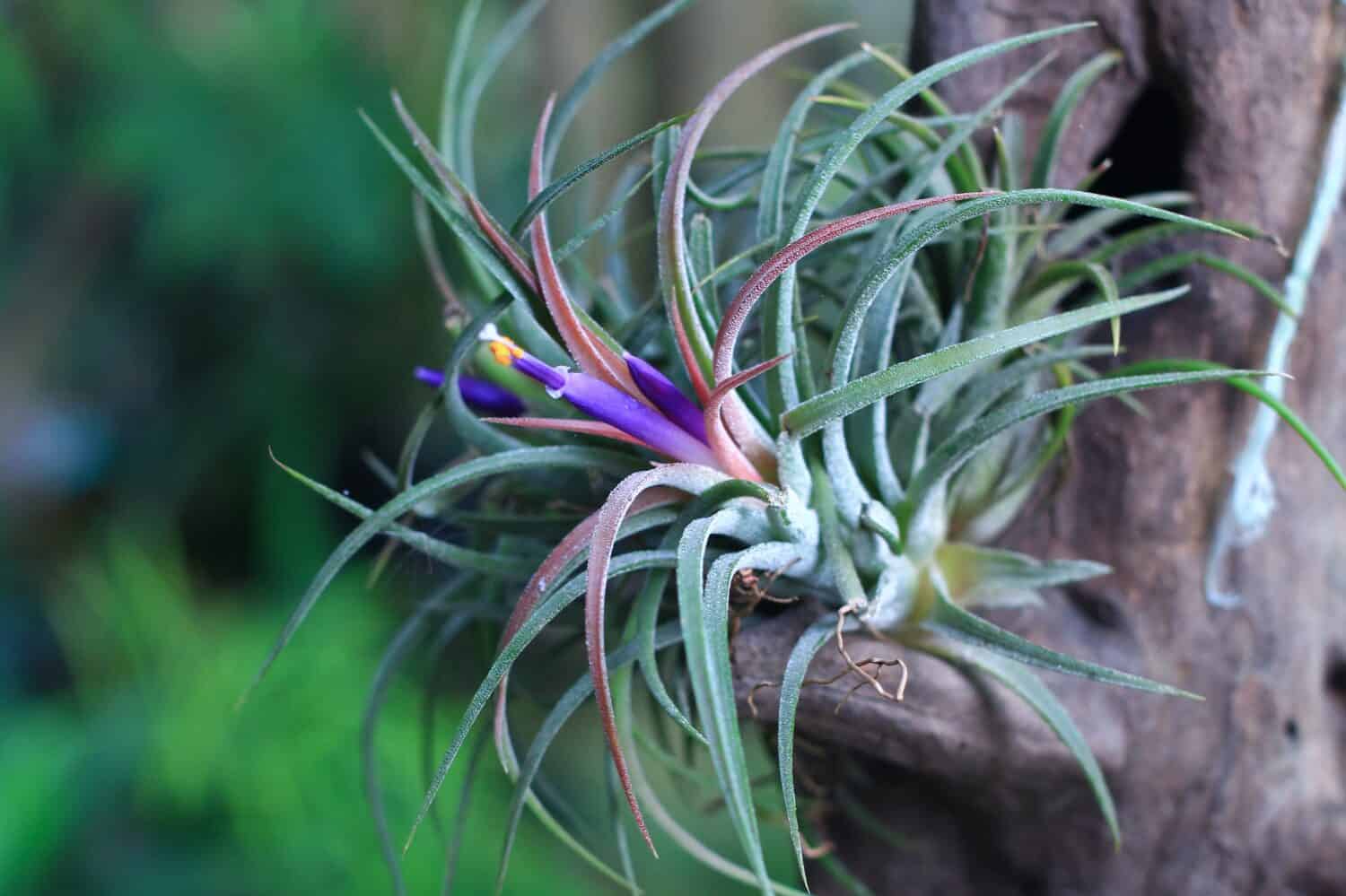
The
Tillandsia ionanthacan be identified with its green leaves and shades of bright red colors.
©Angkana6395/Shutterstock.com
This small, compact air plant features vibrant green leaves that turn a captivating shade of bright red when exposed to ample sunlight. Its versatility allows it to be displayed in various ways, such as in terrariums, mounted on driftwood, or hanging from decorative holders.
2. Tillandsia xerographica
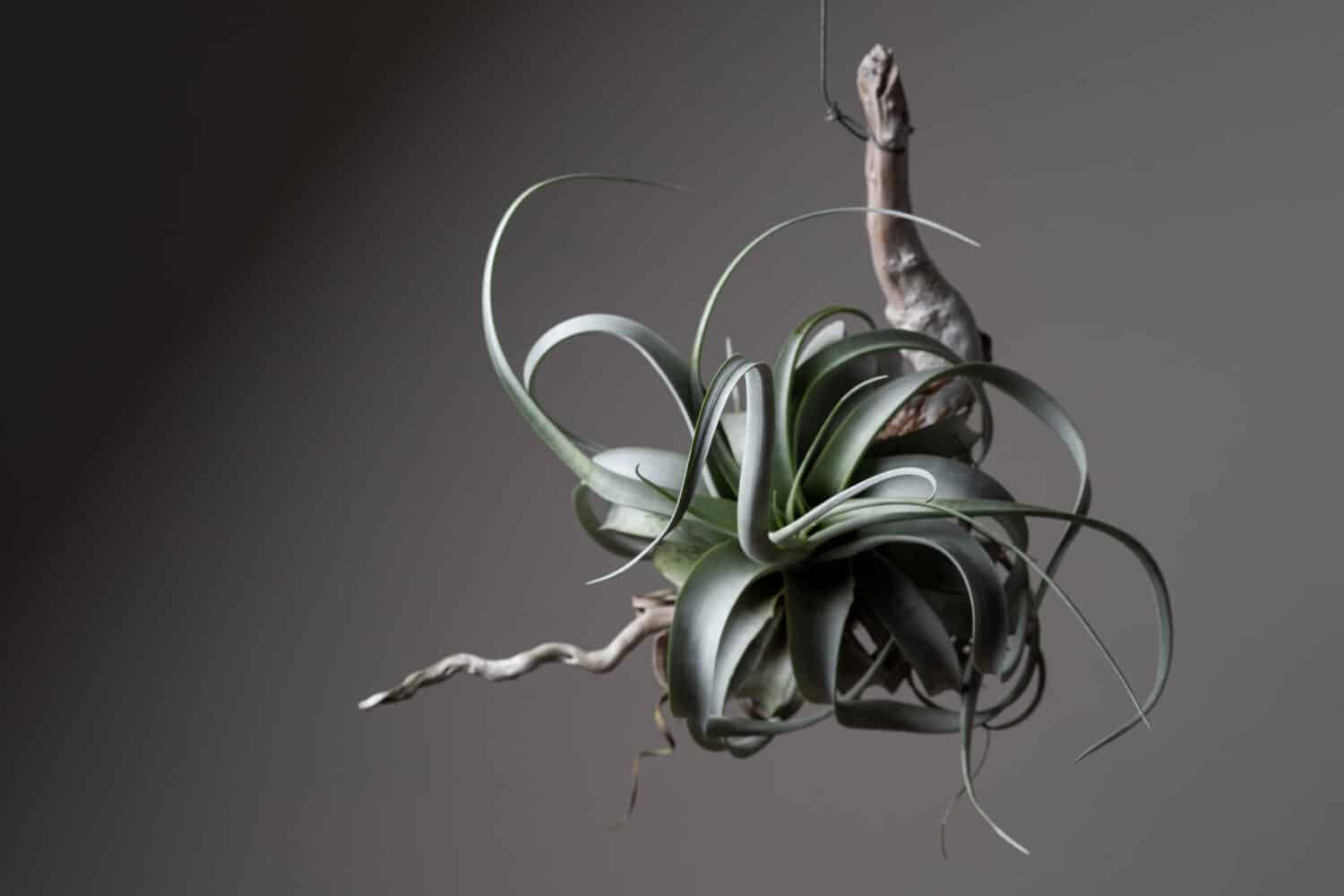
The
Tillandsia xerographicais drought-tolerant, so it’s ideal for those who don’t have a strict watering schedule.
©mokjc/Shutterstock.com
With its striking appearance and unique curly leaves, the xerographica is a showstopper. This air plant can serve as a centerpiece in any room, adding a touch of elegance and sophistication. It is drought-tolerant, making it ideal for those who forget watering schedules.
3. Tillandsia bulbosa
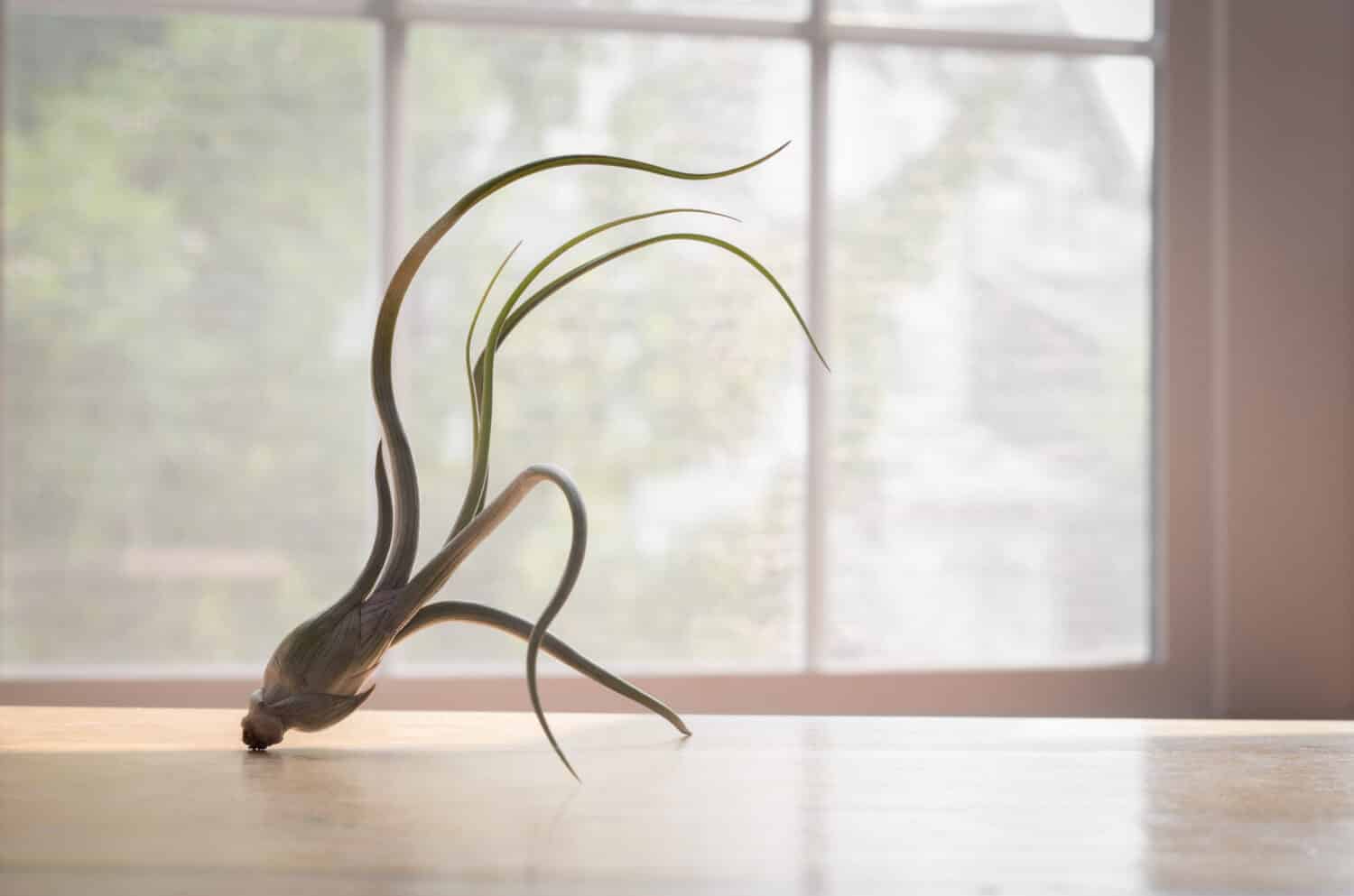
With its curly leaves, a
Tillandsia bulbosais perfect for hanging planters or terrariums.
©Eddie Bednarek/Shutterstock.com
The bulbosa is a visually intriguing air plant with long, curly leaves and a bulbous base that gives it a distinct personality. It thrives in moderate humidity and bright, indirect light, making it a perfect addition to terrariums or hanging planters.
4. Tillandsia brachycaulos
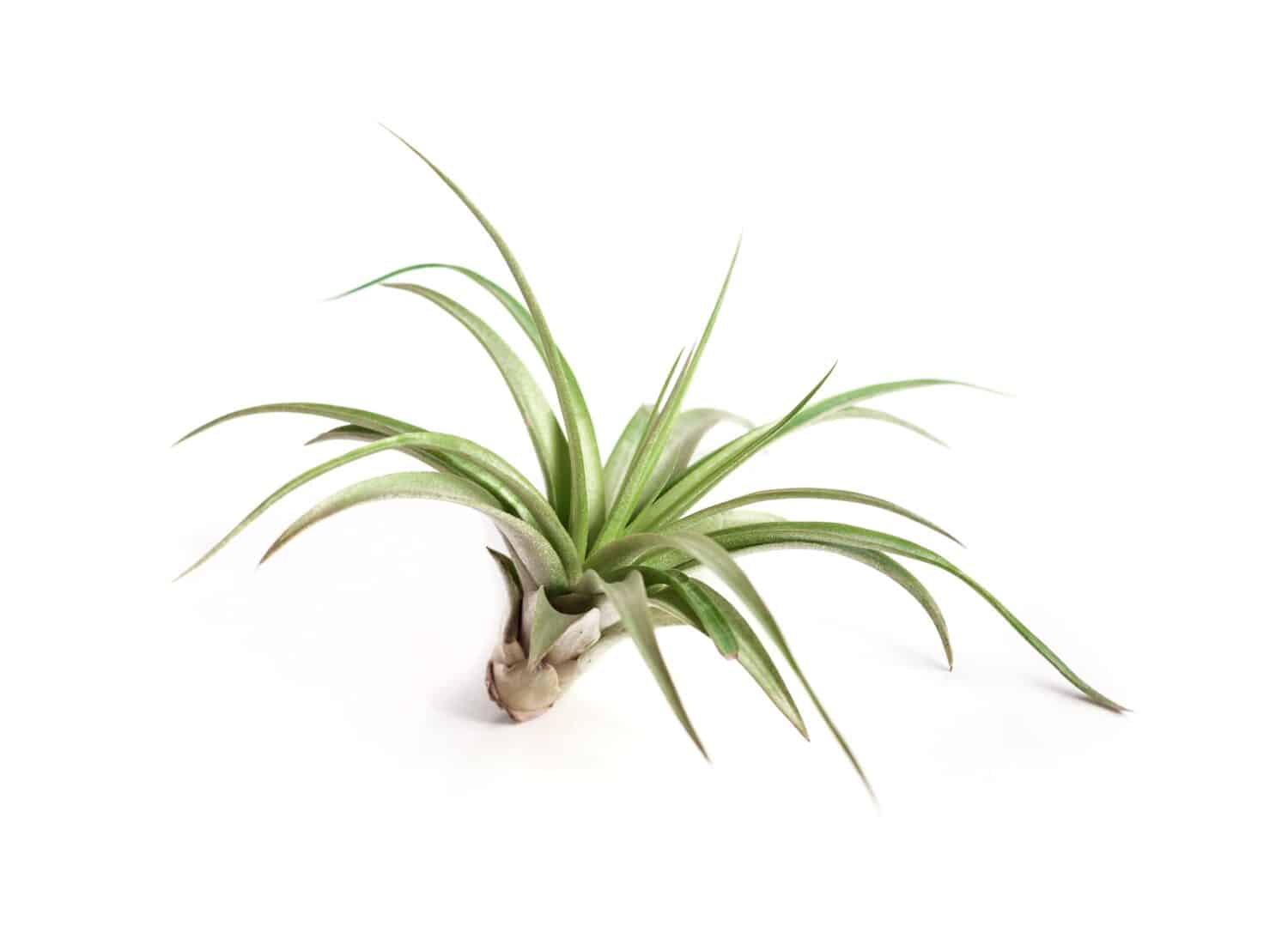
The
Tillandsia brachycaulosis one of the best air plants that are easy to care for.
©TYNZA/Shutterstock.com
The brachycaulos is a visually striking air plant with vibrant red or orange hues. It is relatively easy to care for and enjoys bright, indirect light. Regular misting or soaking is necessary to keep it hydrated and thriving.
5. Tillandsia caput-medusae
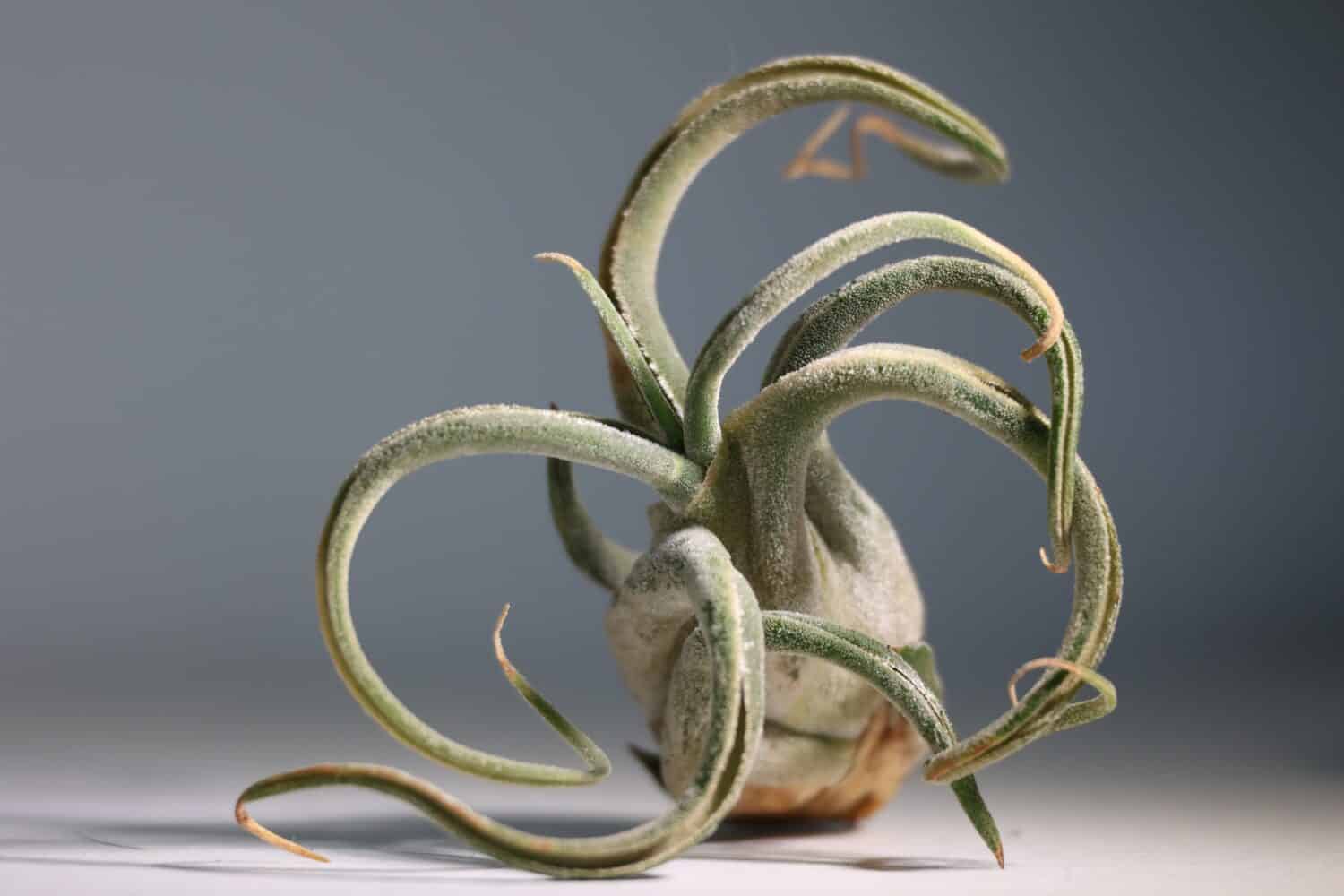
Before a
Tillandsia caput-medusaeturns into a purple flower, it develops cherry red colors.
©AlejandroTT/Shutterstock.com
True to its name, the caput-medusae showcases wild, twisting leaves that resemble the serpentine locks of the mythological creature Medusa. The plant first develops spikes of cherry red before blooming into a purple flower.
6. Tillandsia stricta
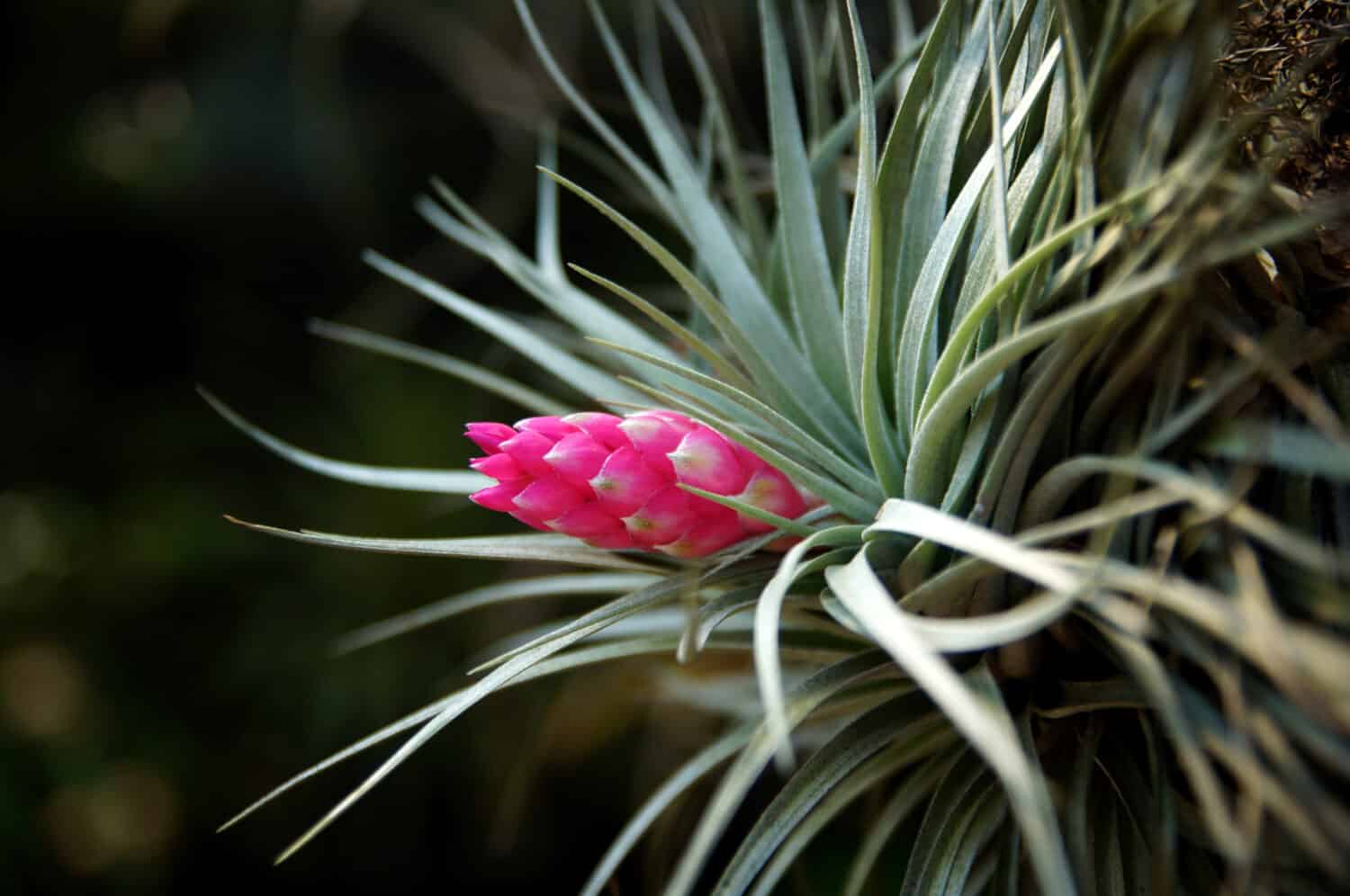
While a
Tillandsia strictais slow growing, it’s easy to maintain.
©Anastasia Mangindaan/Shutterstock.com
The Tillandsia stricta is a versatile air plant with vibrant green leaves that curl gracefully. This plant thrives in bright, indirect light and requires regular misting or soaking to stay hydrated. It is slow growing but easy to care for.
7. Tillandsia velutina
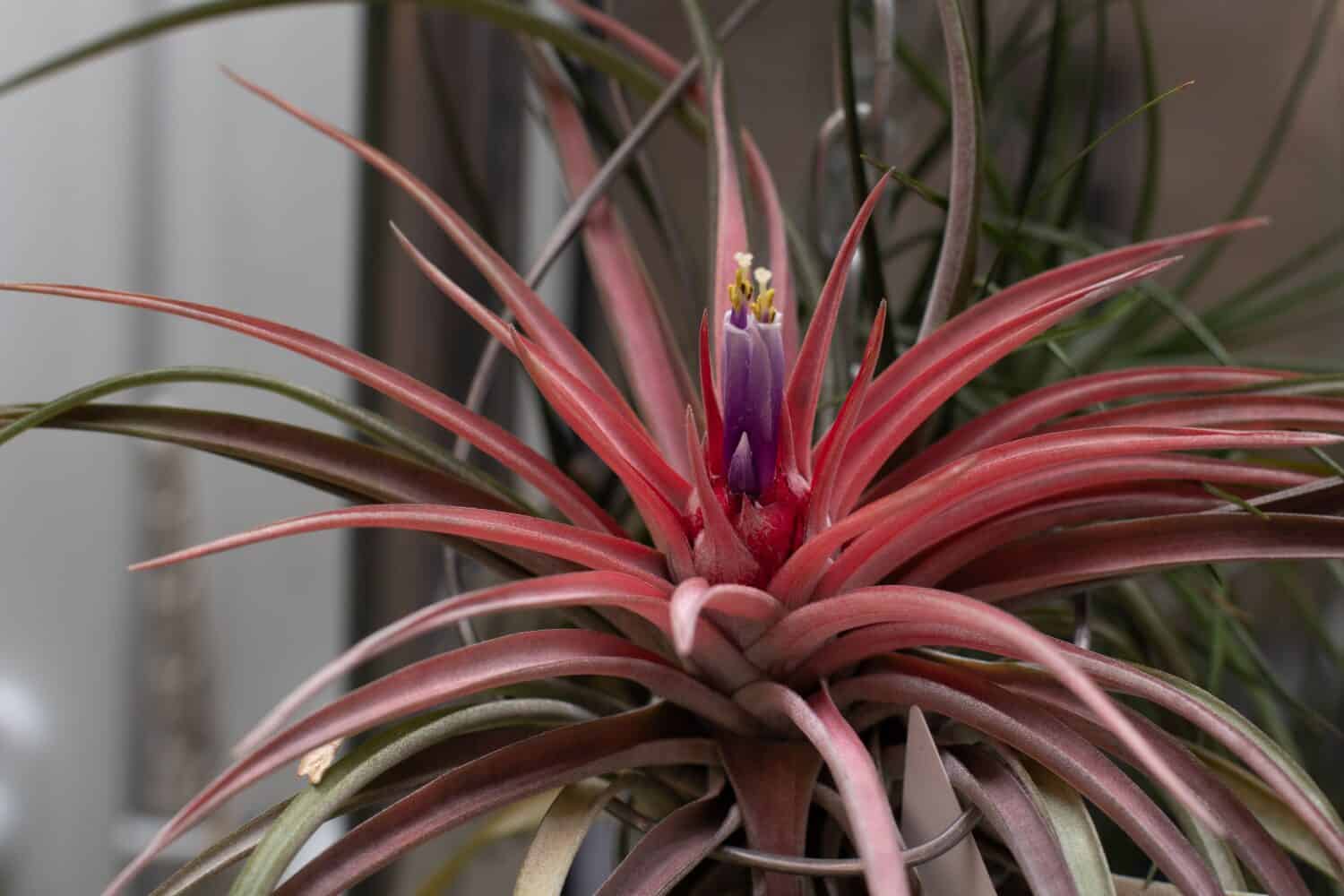
The leaves on the
Tillandsia velutinachange from green to a reddish color when it blooms.
©Lyudmila Serdyuk/Shutterstock.com
The velutina is a charming air plant with soft, velvety leaves ranging from green to silver. It is a relatively small plant, perfect for terrariums or small displays. The leaves can turn red with light exposure and when it’s blooming.
8. Tillandsia abdita
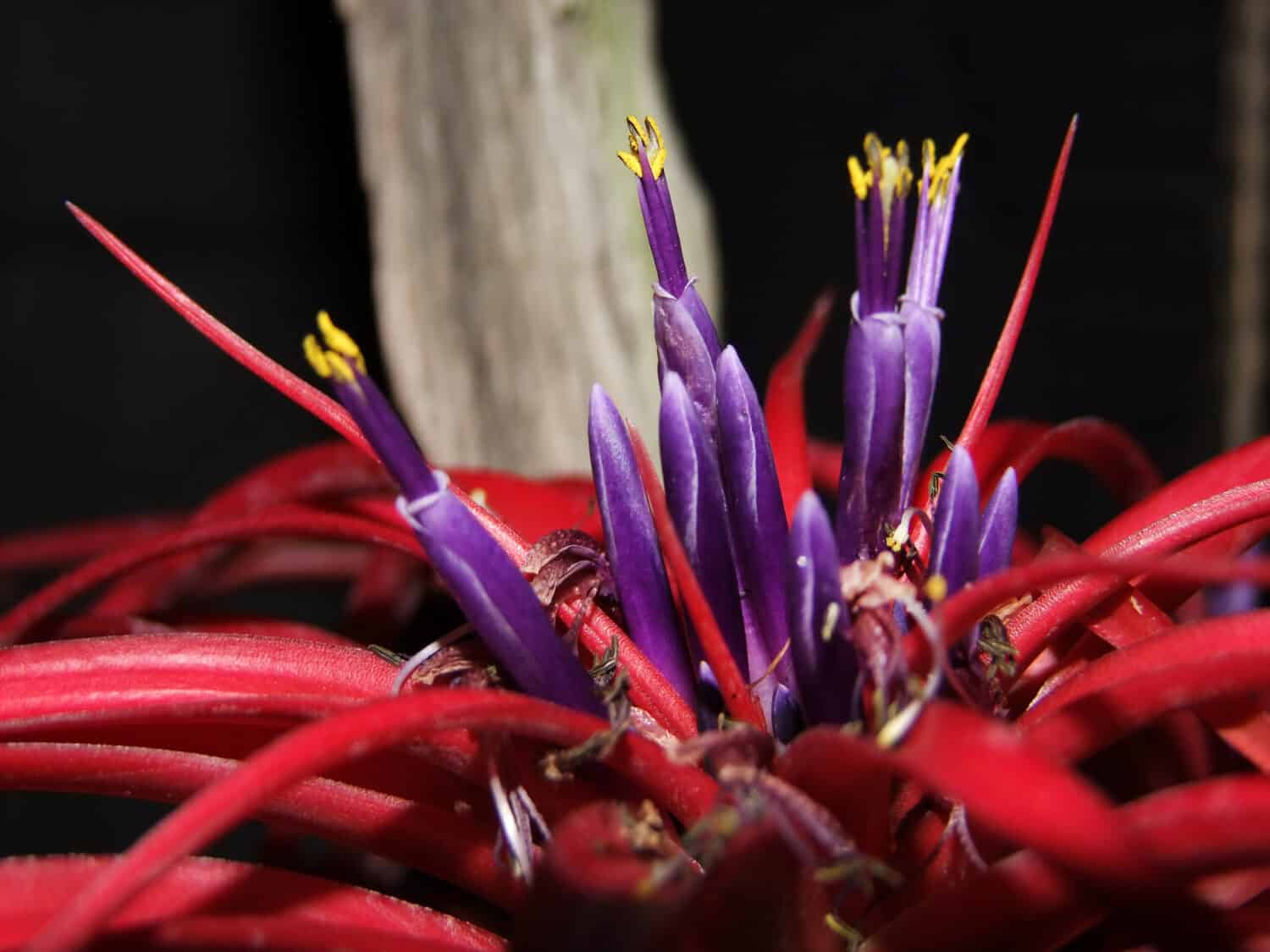
The leaves of a
Tillandsia abditaturn into a vibrant red and purple color as it blooms.
©Carlos Leopardi/Shutterstock.com
The abdita is a unique air plant with striking silvery-green leaves forming rosette shapes. This plant prefers well-lit areas shaded from direct sunlight and requires frequent misting or soaking to keep its moisture levels optimal. It has a compact size and is well-suited for hanging displays or terrariums.
9. Tillandsia tectorum
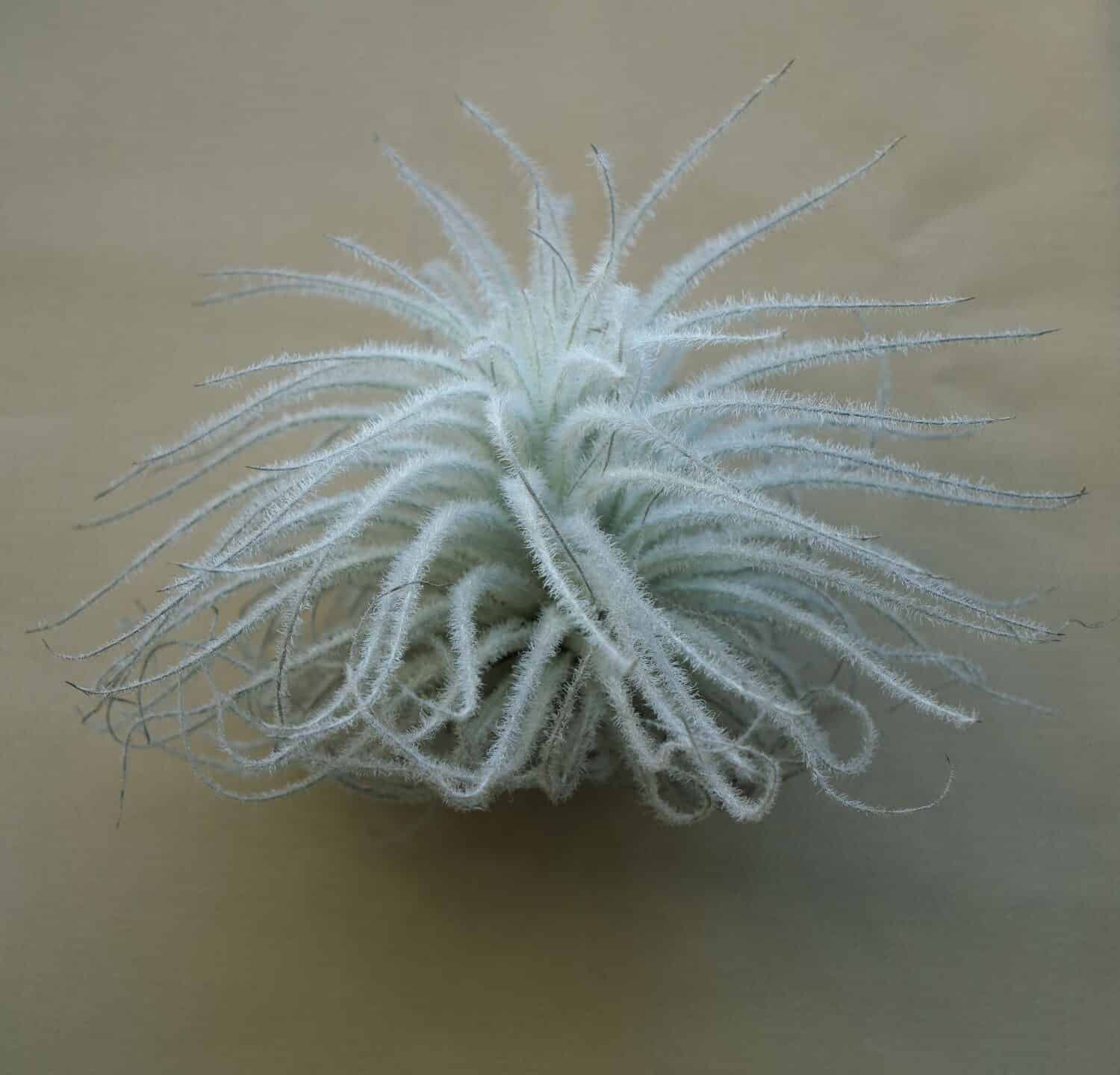
The fuzziness on the leaves of the
Tillandsia tectorumis to reflect light.
©Khun Ta/Shutterstock.com
Known as the “snowball” air plant, the Tectorum is a visually captivating species with its white hue. The plant is covered with fuzzy white trichomes on every leaf, which reflects sunlight. This provides a natural shield, which helps the plant to stay cool and avoid drying out.
10. Tillandsia harrisii
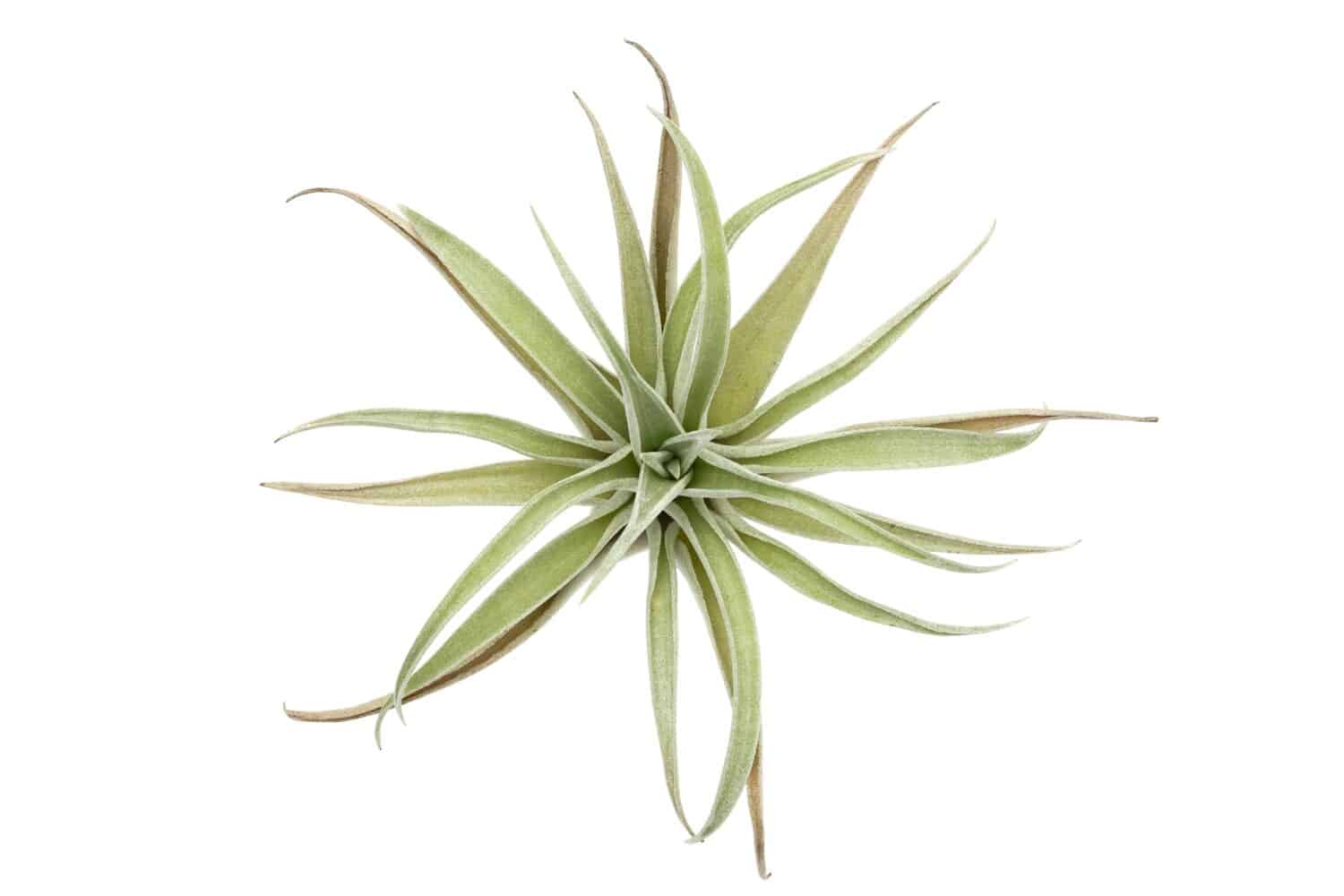
A
Tillandsia harrisiispans 3-4 inches and produces violet and red hues.
©Shao-ping Huang/Shutterstock.com
The harrisii is a gorgeous air plant with delicate, silvery-green leaves that elegantly twist. The Harrisii air plant features soft green and white leaves stretching in beautiful, wide arms measuring approximately 3 to 4 inches across. Additionally, it produces bright red and violet blooms.
How to Care For and Water Air Plants
Caring for air plants is straightforward, but understanding their unique needs is essential for their well-being. Follow these easy solutions to ensure your air plants thrive.
Watering
Air plants have distinct watering requirements. They prefer soaking or misting rather than traditional watering. To soak your air plants, submerge them in room temperature water for about 20-30 minutes every one to two weeks, allowing them to absorb moisture fully. After you soak the plant, gently shaking off excess water is vital. Next, you should place them in a well-ventilated area to dry completely before returning them to their display. Alternatively, mist your air plants with water two to three times weekly, ensuring the entire plant receives a fine misting.
Light
Observe your plants and adjust their placement if you notice signs of sunburn or insufficient light. Air plants can tolerate various lighting conditions but prefer bright, indirect light. Place your air plants near a window or in a well-lit room, but avoid exposing them to direct sunlight, as it can scorch their leaves.
Air Circulation
Adequate air circulation is crucial for air plants’ health. Ensure your plants have proper ventilation by placing them in open spaces or using fans to maintain a gentle airflow. Avoid placing them in excessively humid or stagnant areas, leading to rot and disease.
Temperature and Humidity
Air plants prefer temperatures between 50°F and 90°F (10°C to 32°C). They thrive in average household humidity, but if you live in an arid climate, consider misting them more frequently or using a humidifier nearby. However, be cautious of excessive humidity, which can promote fungal growth. Strike a balance to create a comfortable environment for your air plants.
Fertilization
Although air plants need little fertilization, giving them nutrients can improve their growth and health. You can use a balanced, water-soluble fertilizer specially made for air plants. Dilute the fertilizer to a quarter or half the recommended strength and apply it monthly during the growing season (spring and summer). After fertilization, rinse the plant thoroughly to prevent salt buildup, which can harm the plant.
Which Air Plant Is Beginner Friendly?
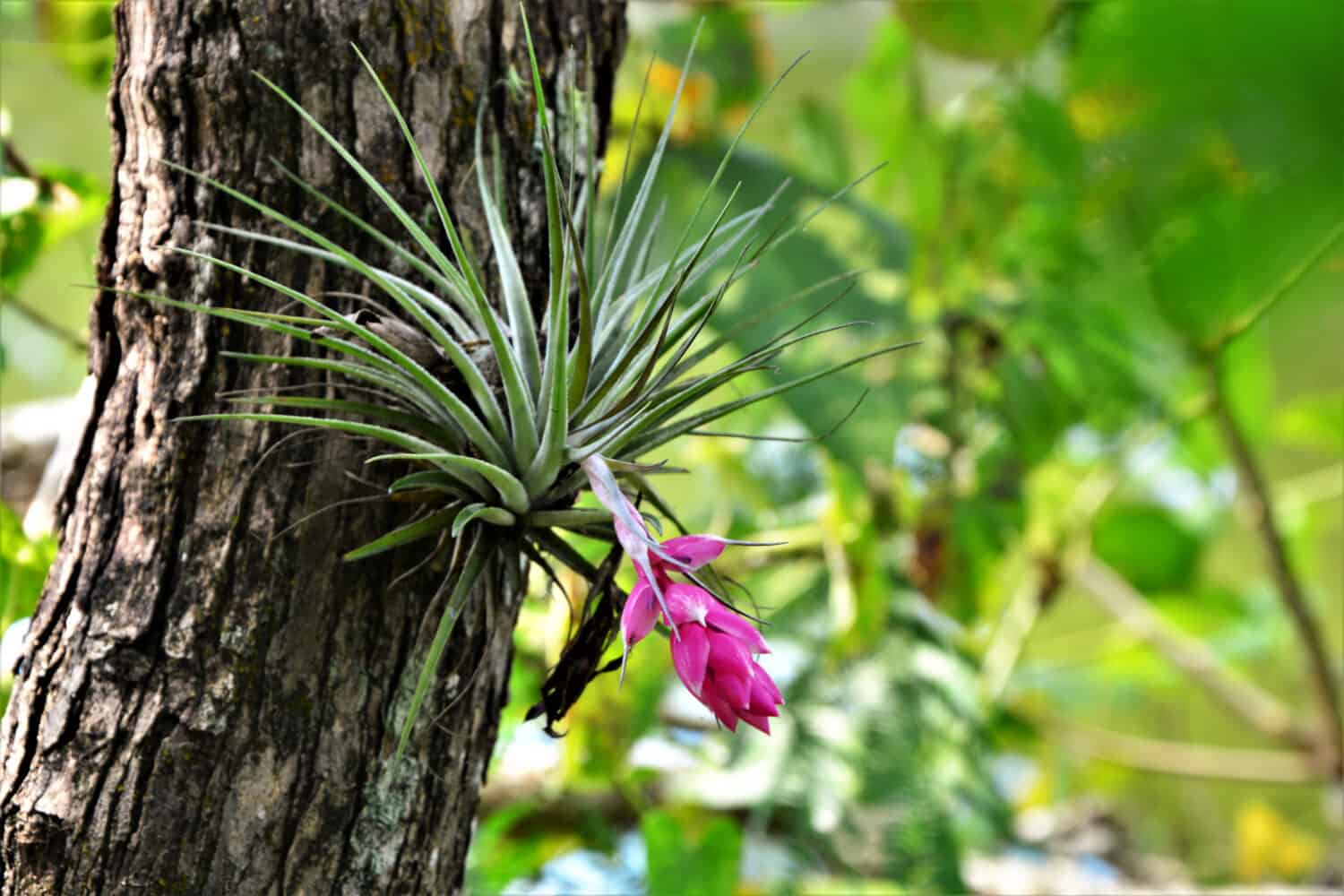
The most beginner-friendly air plant is the
Tillandsia stricta, for a number of reasons.
©NANCY AYUMI KUNIHIRO/Shutterstock.com
Tillandsia stricta is often recommended for beginners as one of the best air plants. Here’s why.
Hardiness
Tillandsia stricta is known for its resilience and ability to adapt to different environments. It can tolerate a broader range of conditions compared to other air plant species, making it more forgiving for beginners still learning about proper care.
Low Maintenance
This air plant is relatively low maintenance, requiring less frequent watering compared to some other species. Giving it a regular spray or bath once or twice a week is usually enough to maintain its health.
Versatility
Tillandsia stricta is an adaptable air plant that can thrive in various setups. Its compact size makes it easier to incorporate into different designs or arrangements. It can be displayed in hanging planters, terrariums, or even mounted on driftwood or decorative holders.
Vibrant Appearance
Vivid green foliage curls elegantly, bringing nature’s beauty to any indoor space. Its unique shape and color make it visually appealing and versatile for various decorative styles.
Availability
Tillandsia stricta is widely available in plant nurseries, garden centers, and online shops. It’s a popular choice among beginners, making it easier to find and obtain.
Remember, while Tillandsia Stricta is considered beginner-friendly, providing proper care is still vital by ensuring it receives adequate light, maintaining appropriate humidity levels, and following a consistent watering routine. With little attention and care, Tillandsia stricta will reward you with its resilience and stunning appearance, making it an ideal air plant for beginners to start their journey into the world of air plant care.
Conclusion
Air plants offer an enchanting and sustainable way to enhance your indoor garden. Their ability to thrive without soil and their aesthetic appeal make them popular among plant enthusiasts. By following the easy care solutions outlined in this guide, you can ensure the health and longevity of your air plants, allowing you to enjoy their beauty and tranquility in your home. Embrace the world of air plants and embark on a rewarding journey of greenery, sustainability, and effortless elegance.
The photo featured at the top of this post is © Rattama Klawnopparat/Shutterstock.com
Thank you for reading! Have some feedback for us? Contact the AZ Animals editorial team.






